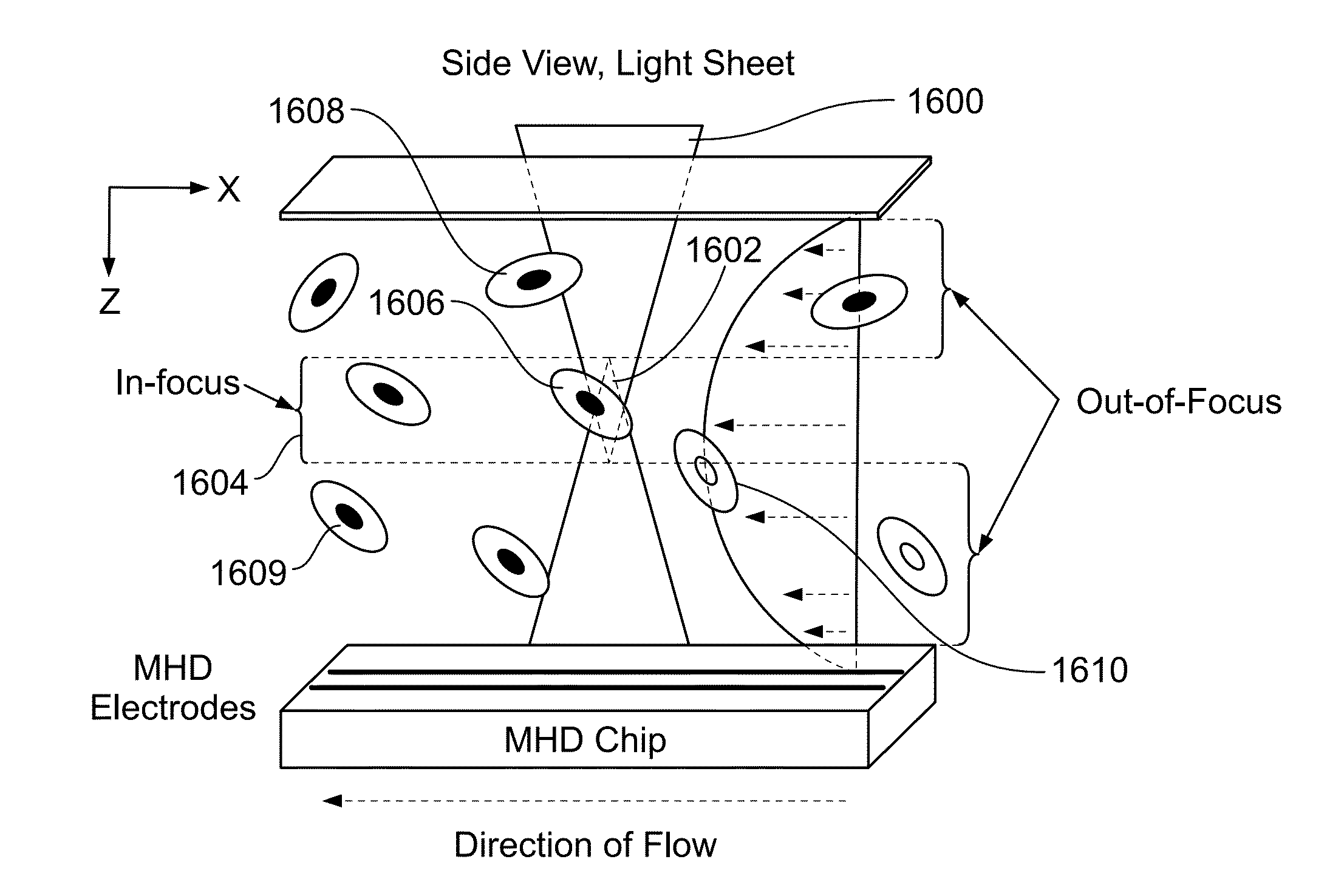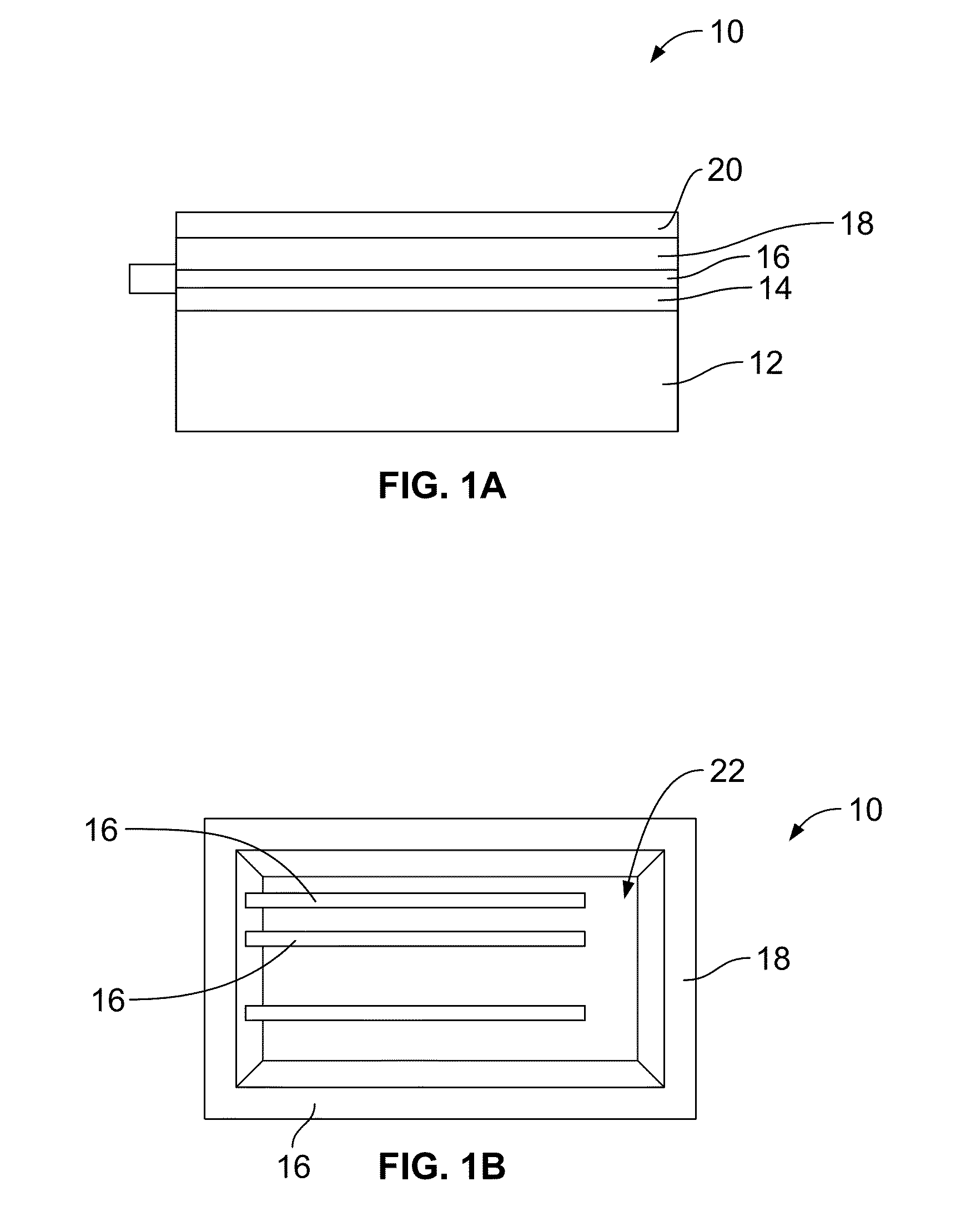Magnetohydrodynamic Microfluidic Systems Including Modified Electrodes And Methods Of Using The Same
a microfluidic and hydrodynamic technology, applied in the field of magnetic hydrodynamic microfluidic systems including modified electrodes and methods of using the same, can solve the problems of low concentration limits, contamination and interference with analyte detection and biocompatibility of the pumping system, and the inability to achieve the highest possible velocities, so as to reduce the overall cost of the system, reduce or eliminate the need for adding redox species, and increase portability and accessibility
- Summary
- Abstract
- Description
- Claims
- Application Information
AI Technical Summary
Benefits of technology
Problems solved by technology
Method used
Image
Examples
Embodiment Construction
[0076]Detailed embodiments of the present invention are disclosed herein; however, it is to be understood that the disclosed embodiments are merely exemplars of the invention, which may be embodied in various forms. Therefore, specific structural and functional details disclosed herein are not to be interpreted as limiting, but merely as a representative basis for teaching one skilled in the art to variously employ the present invention in virtually any appropriately detailed method, structure or system. Further, the terms and phrases used herein are not intended to be limiting, but rather to provide an understandable description of the invention.
[0077]The magnetohydrodynamics (MHD) microfluidic system of the present invention is useful for pumping fluid that includes a current carrying species. The MHD microfluidic system includes an electromagnet that generates a magnetic field, at least two electrodes, at least one of which may be a modified electrode, a cell, an electric field g...
PUM
| Property | Measurement | Unit |
|---|---|---|
| frequency | aaaaa | aaaaa |
| length | aaaaa | aaaaa |
| thickness | aaaaa | aaaaa |
Abstract
Description
Claims
Application Information
 Login to View More
Login to View More - R&D
- Intellectual Property
- Life Sciences
- Materials
- Tech Scout
- Unparalleled Data Quality
- Higher Quality Content
- 60% Fewer Hallucinations
Browse by: Latest US Patents, China's latest patents, Technical Efficacy Thesaurus, Application Domain, Technology Topic, Popular Technical Reports.
© 2025 PatSnap. All rights reserved.Legal|Privacy policy|Modern Slavery Act Transparency Statement|Sitemap|About US| Contact US: help@patsnap.com



